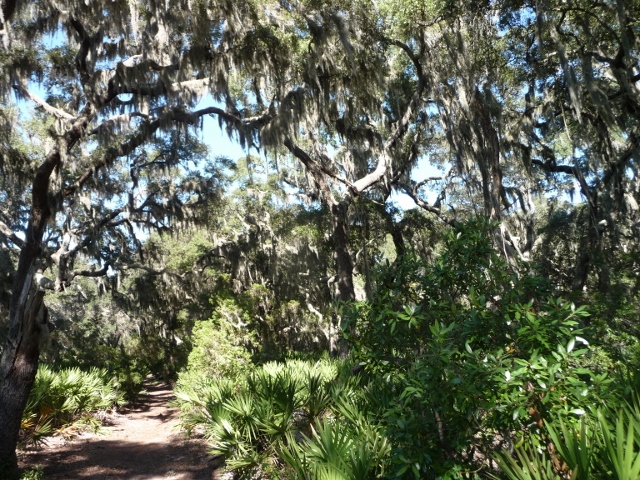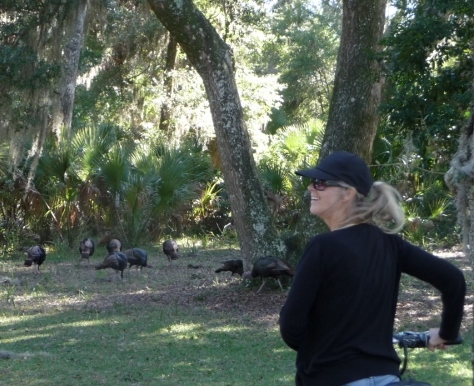2 Nov – Cumberland Island Trip

Yesterday was very cold (7C) and very windy so we stayed on the boat and checked the anchor behaved. Today though it is much more pleasant and so we went ashore. This is possibly one of the most beautiful places I have been to. Of the many different ecosystems we only recognised the most obvious:
Maritime forest – very dense with dramatic Spanish Moss hanging from huge Live Oaks. Actually it is neither Spanish nor a moss – but an epiphyte related to the pineapple! Another interesting plant, the saw palmetto that grows under the oaks. Easily accessed berries were collected and dried by the Timucuan Indians who first lived here. When reconstituted with hot water they tasted like ‘rotten cheeses steeped in tobacco’ - delicious.
Salt marshes – important as a buffer from the tidal flow but apparently ace for acre the most productive land on earth.
Sand dunes and beaches – We saw flocks of tiny white sandpipers doing little murmurations over the waves. Not as impressive as the starlings but really pretty. Loggerhead turtles nest here too
There are also feral horses here, and hogs, deer and wild turkeys. We weren’t allowed to go to the north end of the island as the rangers were having a shoot to cull the hogs and deer. Interestingly, some research shows the horse population is too large as they are damaging the land by overgrazing and are short-lived because of their inadequate diet. Seems they are too cute for people to tolerate their culling ..…. There are also alligators and 9-banded armadillo here but we didn’t see any. Apparently armadillo are important in medical research as the only other mammal that
The other thing we didn’t see was a Megalodon – only fossilised teeth in the little museum. Dredge spoils from the channel are deposited on the island and teeth were found in that sand.
The ruins we went to see are from a huge mansion built by the Carnegie family in 1884. It was burnt down in 1959 by a disgruntled poacher and the family donated it and their land on Cumberland Island to the National Parks Service in 1971. Some of the oldest buildings were tabby houses, a construction technique common on the southern coast using a type of concrete made of lime, sand, water and crushed oyster shells. The estate must have been fabulous in its heyday, and was almost self-sufficient, with the help of the 300 staff required for its upkeep.
And of course, the palm trees!








